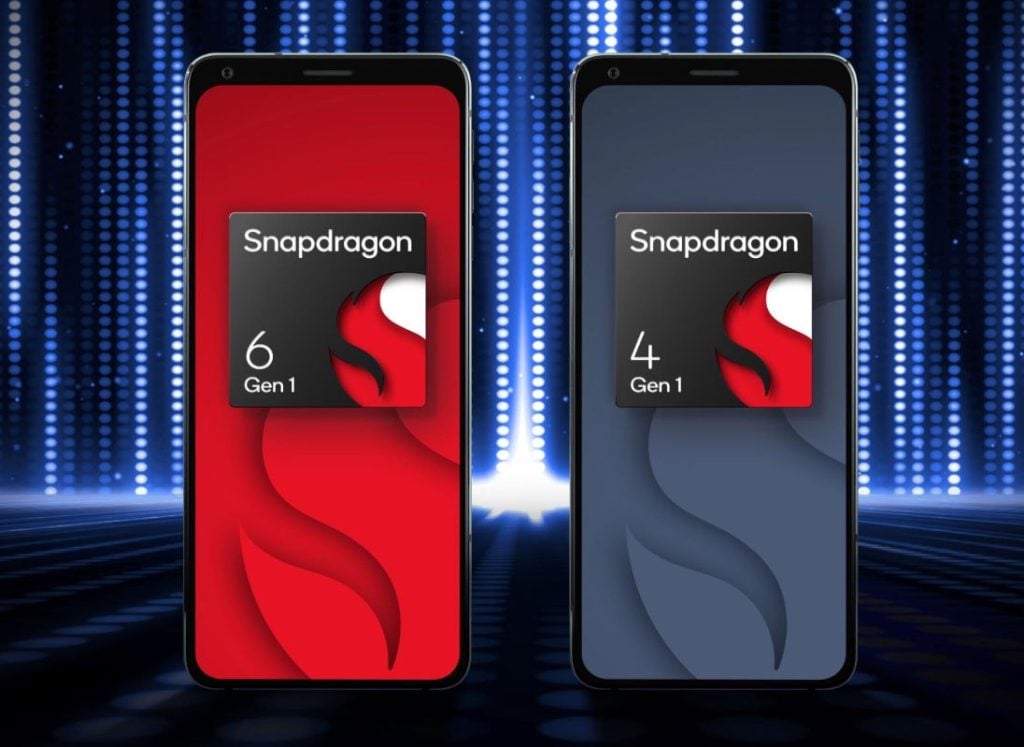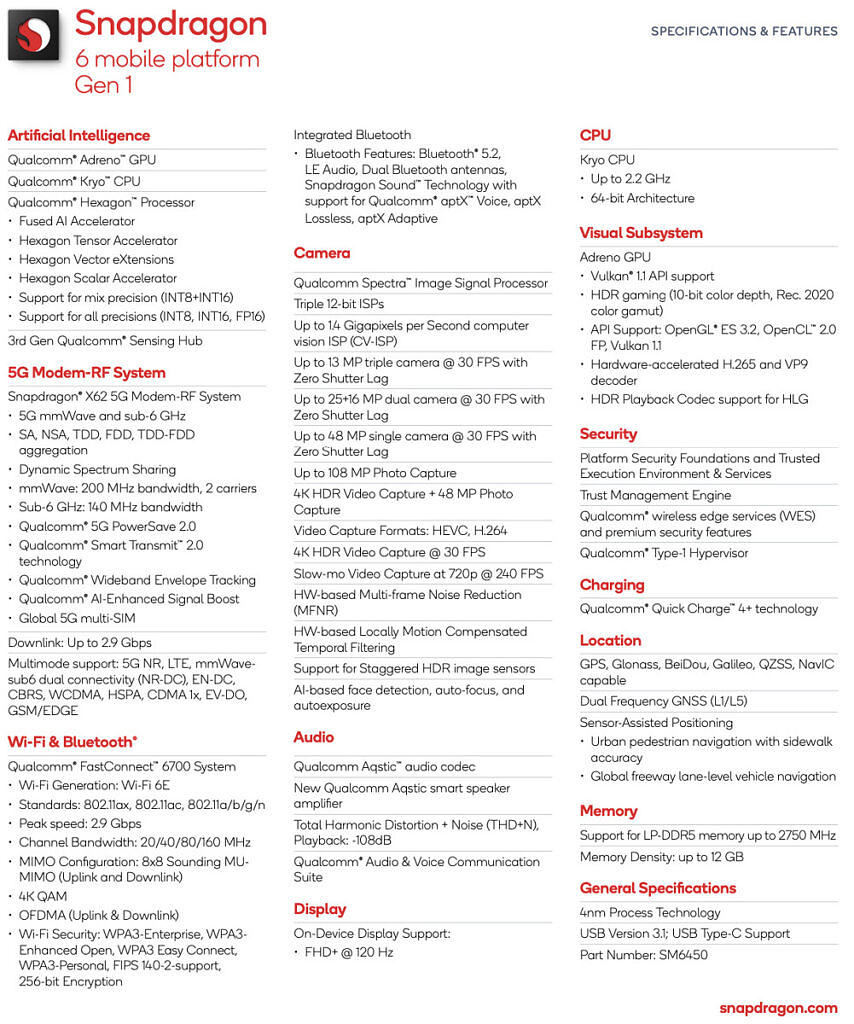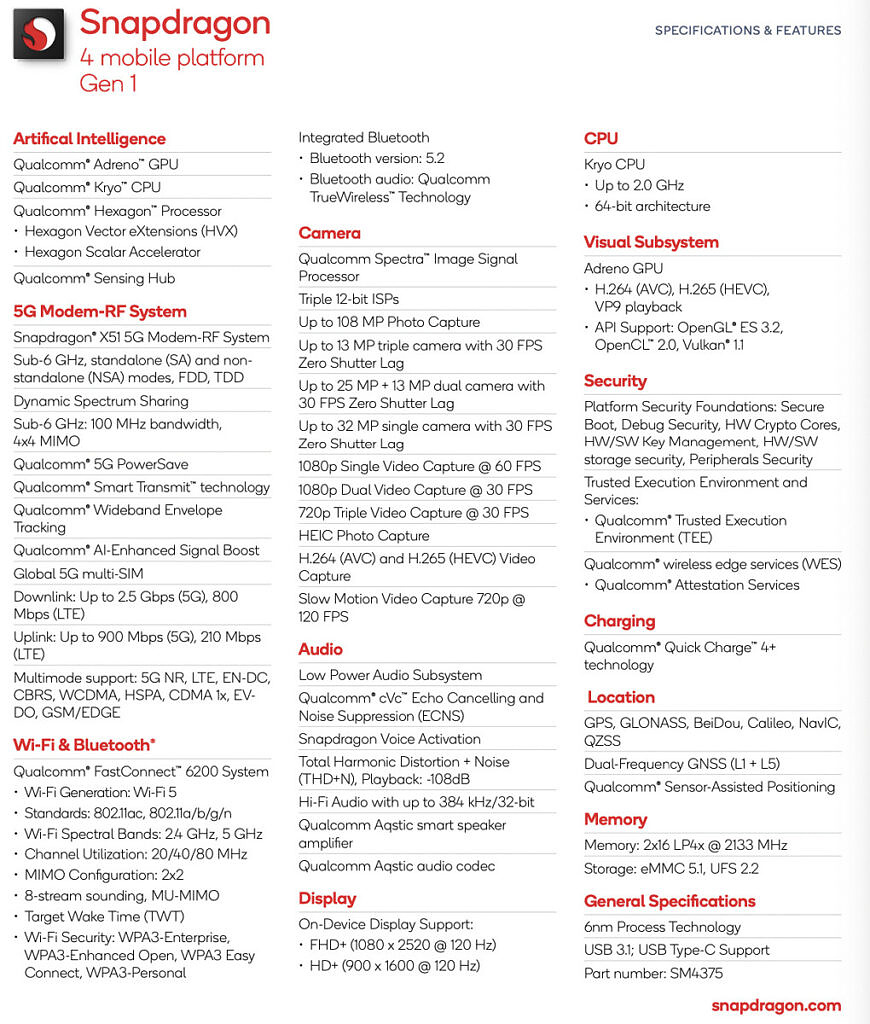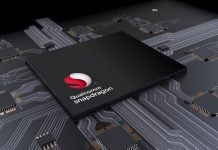Qualcomm recently unveiled the Snapdragon 6 Gen 1 mid-range and Snapdragon 4 Gen 1 entry-level chipsets. The SD 6 Gen 1 is based on a 4nm manufacturing process, whereas the SD 4 Gen 1 is built on a 6nm node. These chips are intended for mass volume 5G devices. So, let’s take a look at what they offer.

Snapdragon 6 Gen 1 specs & features
The Snapdragon 6 Gen 1 is based on a 4nm node and is essentially a replacement for the Snapdragon 695 chipset. The performance of the GPU and CPU are both boosted by up to 35% and 40%, respectively.

The new chipset has an octa-core CPU that has four Cortex-A78 and four Cortex-A55 cores. It has a max clock speed of 2.2GHz. Additionally, it includes an undisclosed Adreno GPU that supports the Vulkan 1.1, OpenGL ES 3.2, and OpenCL 2.0 FP APIs. The GPU features hardware-accelerated H.256 and VP9 decoding, HDR Playback Codec support for HLG, and HDR gaming compatibility.
It offers support for up to 12GB LPDDR5 RAM clocked at 2750MHz and UFS 3.1 storage. We also get the 7th Gen Qualcomm AI Engine with the always-on 3rd Gen Qualcomm Sensing Hub and the next-gen Qualcomm Hexagon Tensor Accelerator (HTA) for improved AI network performance.
On the connectivity front, the chip has the Snapdragon X62 5G Modem-RF system that offers support for both mmWave and sub-6GHz 5G. Qualcomm FastConnect 6700 system is also offered on the chip which brings Wi-Fi 6E support and Bluetooth 5.2 with LE Audio.
The processor has a Qualcomm Spectra 12-bit Triple ISP that can accommodate up to three 13MP cameras, a 25MP+16MP dual camera system, or a single 48MP camera. The ISP also provides hardware-based multi-frame noise reduction, slow-motion 720p video capture at 240FPS, 4K HDR video capture at 30FPS, and AI-based face detection, auto-focus, and auto-exposure.
Other than that, Qualcomm Quick Charge 4+ fast charging, dual-frequency GNSS (L1/L5), Sensor-Assisted Positioning, and support for up to FHD+ 120Hz on-device displays are all supported on the chip.
Snapdragon 4 Gen 1 specs & features
The Snapdragon 4 Gen 1 is the successor of the Snapdragon 480 Plus from last year. It is based on a 6nm process and brings 10% proved GPU performance and up to 15% better CPU performance compared to its predecessor.

The chipset comprises of an octa-core CPU with two Kryo Prime CPUs (Cortex A78-based) at up to 2.0GHz and six Kryo Efficiency CPUs (Cortex A55-based) at up to 1.8GHz. On the GPU front, we get an unspecified Adreno GPU with Vulkan 1.1, OpenGL ES 3.2, and OpenCL 2.0 API support. Support for LPDDR4X memory at up to 2133MHz, along with eMMC 5.1 and UFS 2.2 are also present.
For connectivity, the chip features a Snapdragon X51 5G Modem-RF system, along with Qualcomm FastConnect 6200 System, which brings Wi-Fi 5 support and Bluetooth 5.2. The Snapdragon 4 Gen 1 also gets the Qualcomm Spectra 12-bit Triple ISP with Multi-frame Noise Reduction (MFNR) and Triple Concurrent photo and video capture. It can accommodate up to three 13MP cameras, a 25MP+13MP dual camera system, or a single 32MP camera.
The image signal processor also supports 1080p single video capture at 60 frames per second, 1080p dual video capture at 30 frames per second, 720p slow motion video capture at 120 frames per second, and HEIC photo capture. Other than that, the chipset offers Qualcomm Quick Charge 4+ support, dual-frequency GNSS (L1/L5), Sensor-Assisted Positioning, and up to FHD+ 120Hz on-device display support.
The Snapdragon 4 Gen 1 will make its debut on iQOO’s upcoming Z6 Lite smartphone and will be available globally before the end of September. On the other hand, The first SD 6 Gen 1-powered devices are expected in the first quarter of 2023.
RELATED:
- iQOO Z6 Lite 5G tipped to come with Snapdragon 4 Gen1 SoC, Android 12
- iQOO Z6 Lite 5G is launching on September 14, here’s what we know so far
- Mysterious phone with 1.5K display, new 4nm Dimensity 8-series chip in works, could be Realme GT Neo 4







